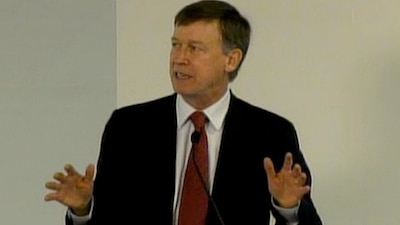Colorado is among five states chosen to participate in a pilot program to expand the school day in selected districts.

Nine schools in Boulder Valley, Denver Public Schools, Jefferson County and Westminster (Adams 50) will be part of the project starting in the 2013-14 school year. About 5,000 students will be involved. Districts in the program have agreed to expand the school year by 300 hours a year, for a total of 1,440 hours in Colorado. (State law requires districts to offer a minimum 1,080 school hours a year.)
The other participating states are Connecticut, Massachusetts, New York and Tennessee. Schools in 12 districts in the five states will participate, covering about 19,500 students.
The TIME Collaborative project is sponsored by the Ford Foundation and the National Center on Time & Learning and was announced during a Washington, D.C., news conference this morning. (TIME stands for “Time for Innovation Matters in Education.”)
Participating schoolsHere’s the list of schools involved in the new program and their current enrollments
Boulder
(All are in Lafayette)
- Centaurus High – 1,017
- Angevine Middle – 587
- Pioneer Elementary (bilingual) – 443
- Sanchez International Elementary – 332
Denver
- Godsman Elementary – 486
- Kepner Middle – 1,176
(7 DPS schools are in an extended-time pilot this school year.)
Jeffco
- Pennington Elementary (Wheat Ridge) – 282
- North Arvada Middle – 444
Westminster
- STEM 3-8 Magnet School (opening fall 2013)
Gov. John Hickenlooper attended the event, saying, “We need more time for kids … that extra time means all the world” for students.
The governor said the Colorado districts will look at the program as an opportunity to expand blended learning and flexible schedules for teachers.
Improving education “Is a question of social justice,” Hickenlooper said.
Chris Gabrieli, chairman of the National Center on Time & Learning, called the program “the first scalable approach” to expanding time in school on a broad basis, noting that now only about 1,000 public schools in 36 states use expanded learning time.
Education Secretary Arne Duncan also attended the event, saying, “This is obviously an extraordinary idea whose time has come. … This is the kernel of a national movement. … We haven’t taken this step for a long time because of adult intransigence.”
Duncan also said, “We have to give them the time to learn more. The goal here is not more time, it’s more learning.”
Speakers also promoted student safety as a benefit of a longer school day. Ford Foundation President Luis Urbinas noted the multiple dangers students face in the hours between when schools let out and parents come home.
Duncan picked up on that, noting the tragic deaths of students while he was superintendent of the Chicago schools. “None of those kids were killed during the school day.”
Participating schools will use state and federal funds, plus grants from Ford, for the program. The foundation has committed $3 million a year over three years for the effort. Colorado also is receiving a $900,000 grant from the National Center.
In Colorado, the Colorado Legacy Foundation will work with the Department of Education and the four districts to implement the program.
“In some cases this work is about creating cost-neutral solutions for districts to make better use of the time they have. In all cases, we know that the effective and innovative use of time is the foundation for building better, more effective school days,” said Helayne Jones, Legacy executive director.
